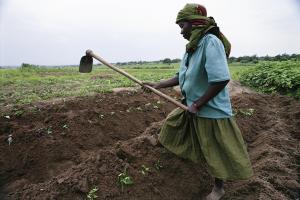Last update: June 2025
The ability to anticipate and prevent hunger crises is facing growing challenges due to disruptions in key data and early warning systems. Many traditional tools used by humanitarian agencies and governments to monitor food insecurity have experienced reduced capacity, limiting the availability of timely and reliable data. As a result, food crisis forecasting systems that previously provided early alerts are now under significant strain, and essential data streams are becoming increasingly scarce.
Artificial intelligence is emerging as a promising tool to help address this gap. An initial model for predicting food crisis which was developed by the Food Security Portal utilizes passively collected big data and historical occurrences of food crises to estimate prevalence of people experiencing acute food insecurity across each IPC phase. The model uses high-frequency datasets and machine learning algorithms to assess and forecast food crisis risks across 60 countries.
This presentation below, led by Yanyan Liu and collaborators from IFPRI, UNICEF, and the University of Maryland, introduces a predictive modeling approach for anticipating food crises using passively collected big data. By leveraging over 100 real-time indicators—including climate conditions, economic stressors, infrastructure gaps, and conflict intensity—the model forecasts acute food insecurity (measured by IPC phases) up to 12 months in advance. Trained on data from 29 countries between 2017 and 2021 and validated on 2022 IPC outcomes, the model achieves high sensitivity and reasonable precision, correctly identifying the majority of severe food insecurity cases. Key findings highlight the role of food price volatility and conflict in driving crisis-level outcomes. The study demonstrates the feasibility of using machine learning for early warning in fragile contexts, with implications for reducing assessment costs and improving the timeliness of humanitarian response, while also pointing to the need for future work that integrates high-frequency, household-level data and explores causal drivers.
Devex Artice: As famine data dries up, can AI step in?

As traditional famine early warning systems face data shortages, IFPRI researchers have developed an AI model to help fill the gap. Trained on over 13,000 subnational observations from 38 countries, the model forecasts crisis-level food insecurity using secondary data such as prices, weather, and conflict events. It can predict Integrated Food Security Phase Classification (IPC) levels up to a year in advance and has shown promising accuracy, even outperforming established systems in some regions. IFPRI emphasizes the model complements—not replaces—field data, offering a valuable tool for anticipatory action where timely, ground-based assessments are limited or unavailable.
Control Panel for Risk Monitoring
The control panel for real-time monitoring of risk factors is an innovative tool that brings together information on various drivers of food crises, including conflict and climate-related shocks.
Food Price Shocks Tool
The Food Security Portal's Price Shocks Tool provides an interactive way to explore the impact of price changes on poverty. When you set hypothetical price shock(s) using the tool, net impacts of selected price changes are generated per household and the impact on poverty is automatically calculated accordingly.
Food Security and Nutrition Indicators Dashboard
The dashboard visualizes global food security and nutrition trends, enabling comparison of key indicators through interactive maps and charts for informed policy analysis.